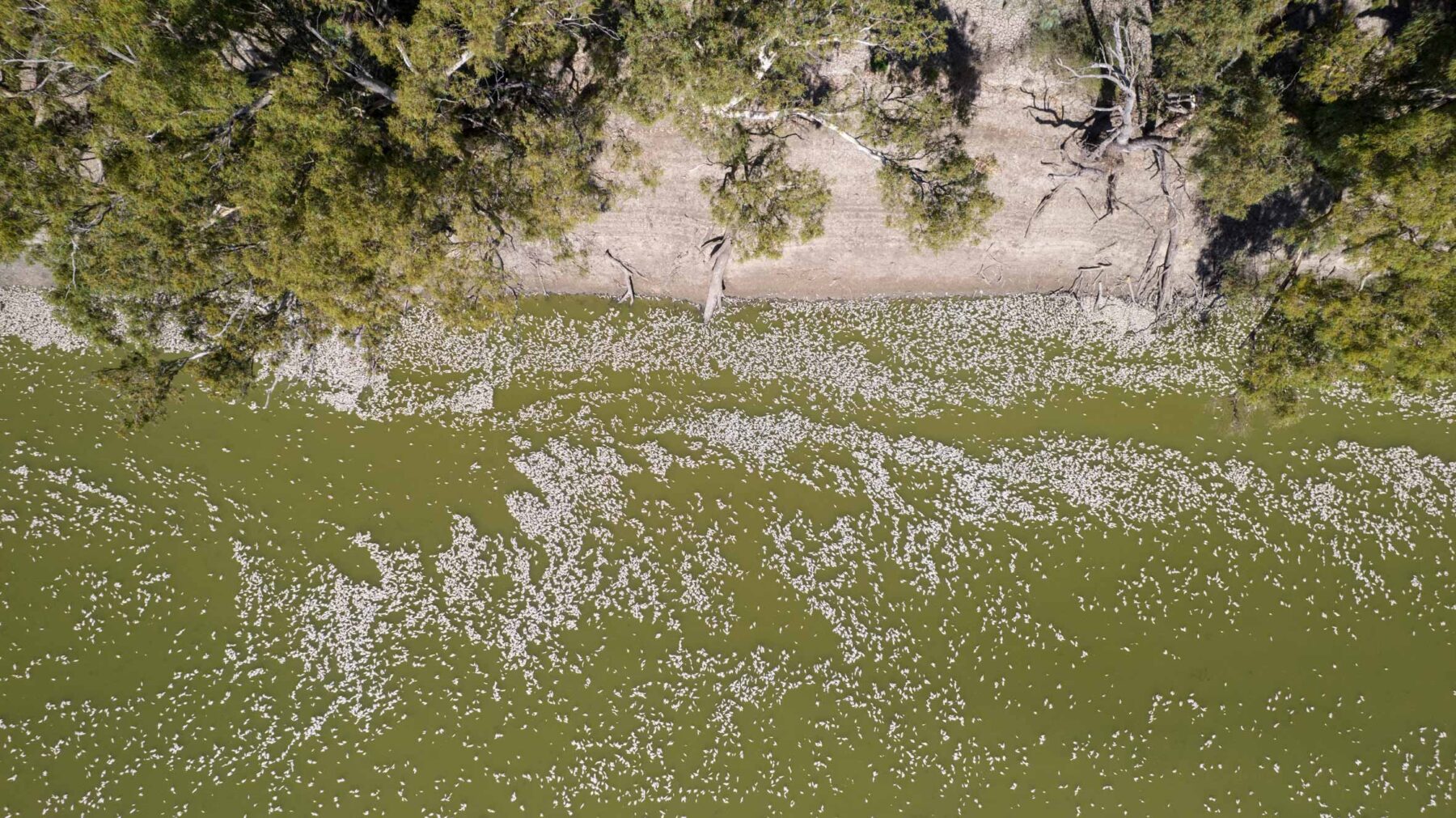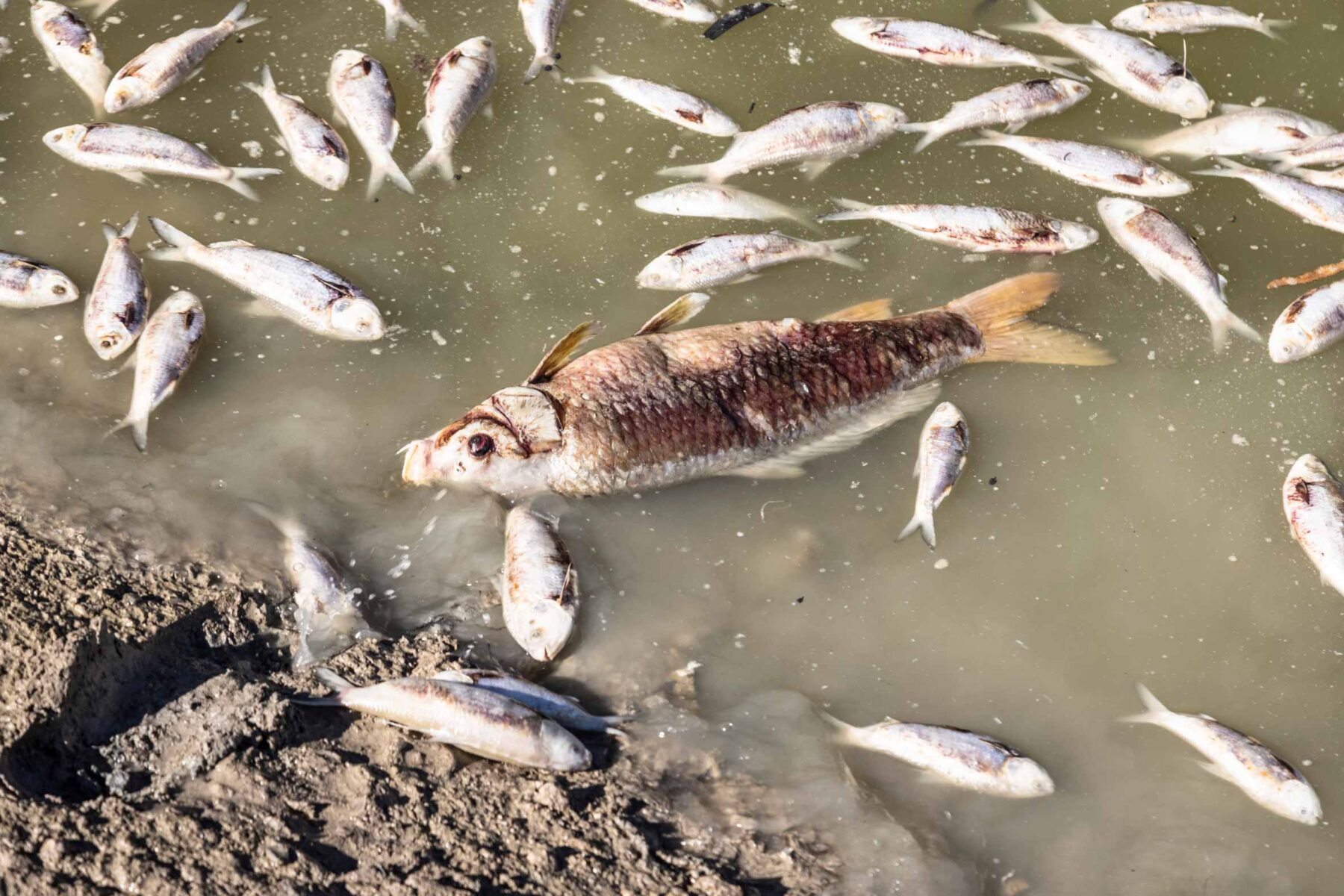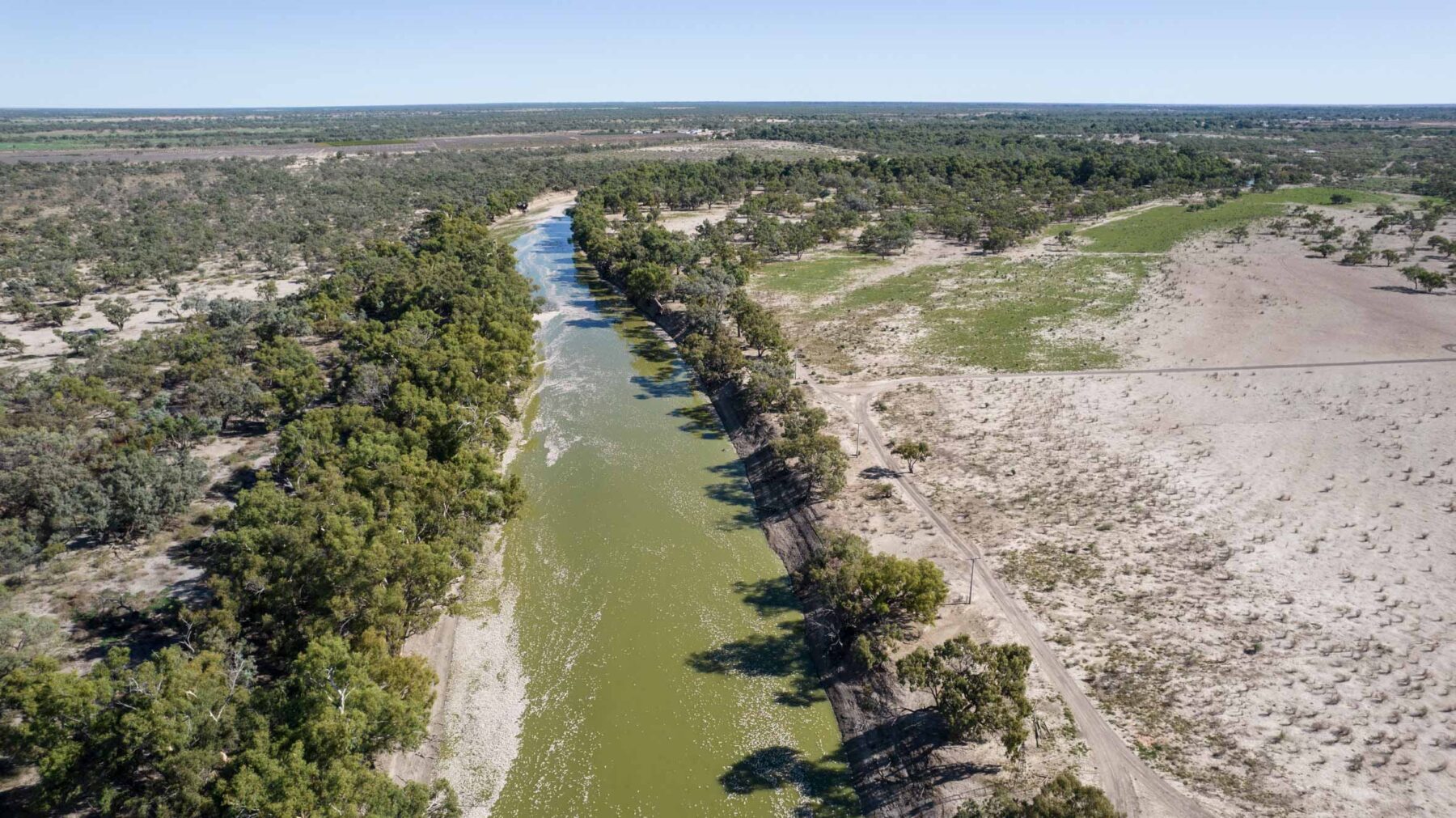Menindee fish kill

They are mostly bony bream as well as golden perch and silver perch, and some Murray cod and carp.
Authorities say the “fish kill” incident has been caused by low oxygen levels in the water (hypoxia) combined with high temperatures as flood waters recede.
The heatwave across western NSW continues to put further stress on a system that has experienced extreme conditions from wide-scale flooding, the Department of Primary Industries says.
They could also the be the result of decomposing organic material brought into the river system by floodwater draining from the Darling river’s floodplains.

Former commercial fisherman and Menindee resident Barry Helms, 76, says he has never seen anything as bad as this, even the fish kills of 2018 and 2019. He has lived in Menindee his whole life and was a commercial fisherman for 33 years on the Menindee Lakes.
“This is as bad as I’ve ever seen and within the next week or two God help us everything’s going to die,” he says.
“In the next week or two we’re going to see the perch and cod in large numbers just like they were in 2019.
“The bony bream… support 50 per cent of the edible native fish diet. And the water birds, the cormorants they all live on these bony bream.”



Locals had been seen seeing dead fish for the last few weeks but not in this number.
“All of a sudden they got extreme.”
Helms believes the cause of the deaths is also chemicals from run-off from irrigated farms.
“We’ve been battling for years and years but it’s on dead ears. I can’t believe it.”
Darling River Action Group Vice-President Darryn Clifton says the fish kill can be explained as water mismanagement.
He says that up to 60,000-plus megalitres* can flow through Menindee each day during a major flood. (*1 megalitre is 1 million litres.) And all of a sudden they shut off the water flow on the weir,” he says.
“It was not a good environment. They shut off the gates too early. The water level dropped and you were left with a pool of sludge.”
Beyond that there was a toxic pulse of water being channelled from upstream in the Darling River and it entered into the water at Lake Wetherell.
“Water NSW allowed it to enter the river channel below the Main Weir. And it provided the perfect environment (for the fish kill).”
In the weeks following the flood there had been fish kills at Walgett, Bourke and Brewarrina further north.
And then this toxic sludge slowly made its way down the river, killing fish along the way.
Darryn says there’s too much ignorance around the lower Darling and the southern basin by water authorities, and the basin needs to be governed under a much stricter policy, especially when it comes to water theft.
The fish kill was “not bloody natural”.


